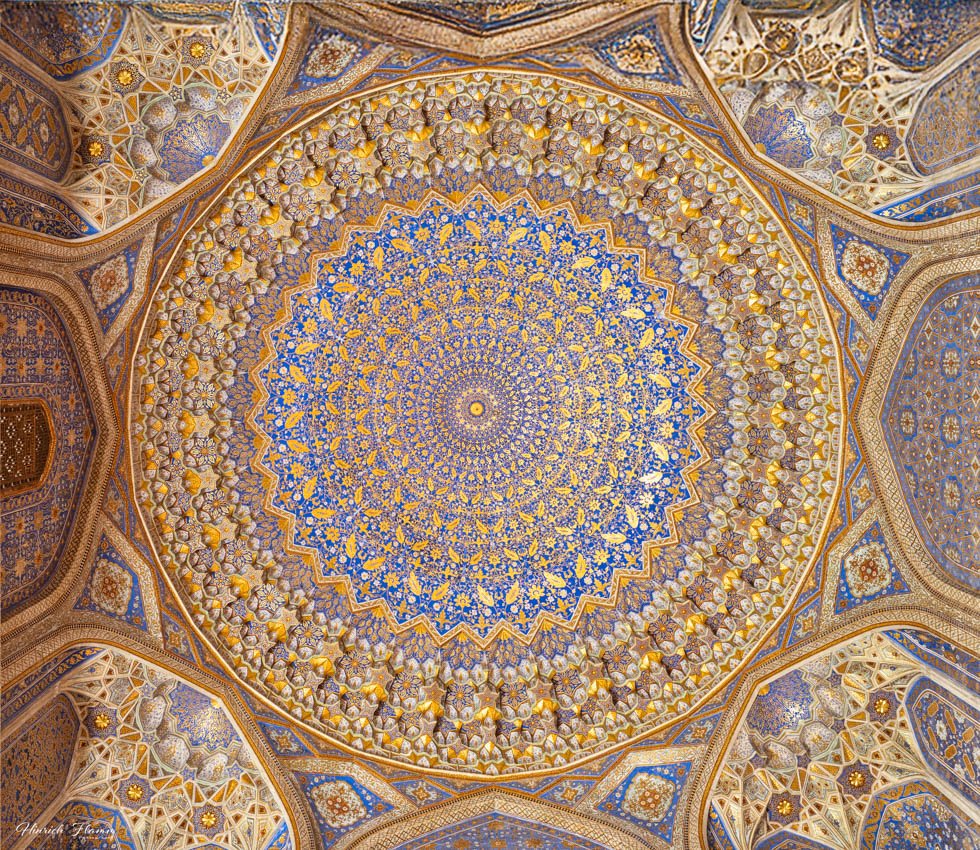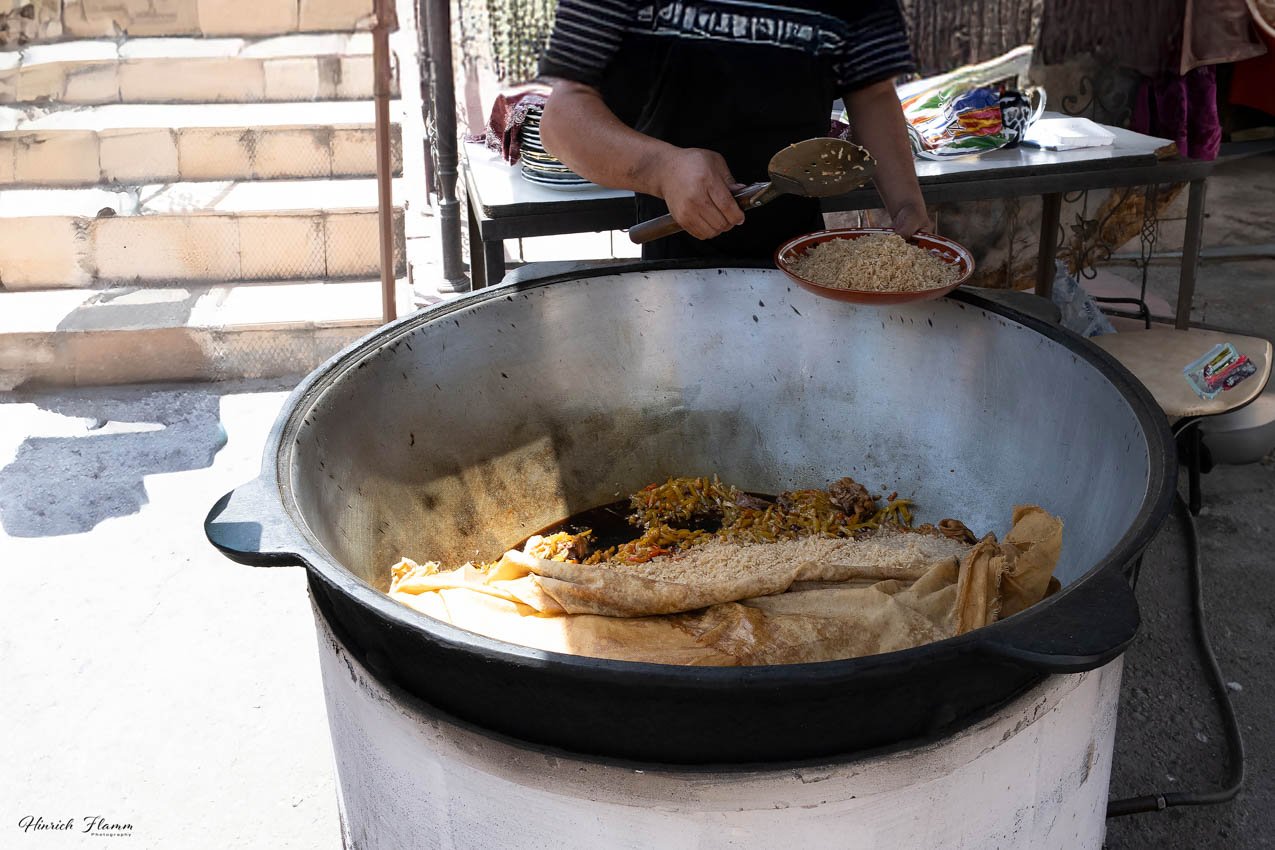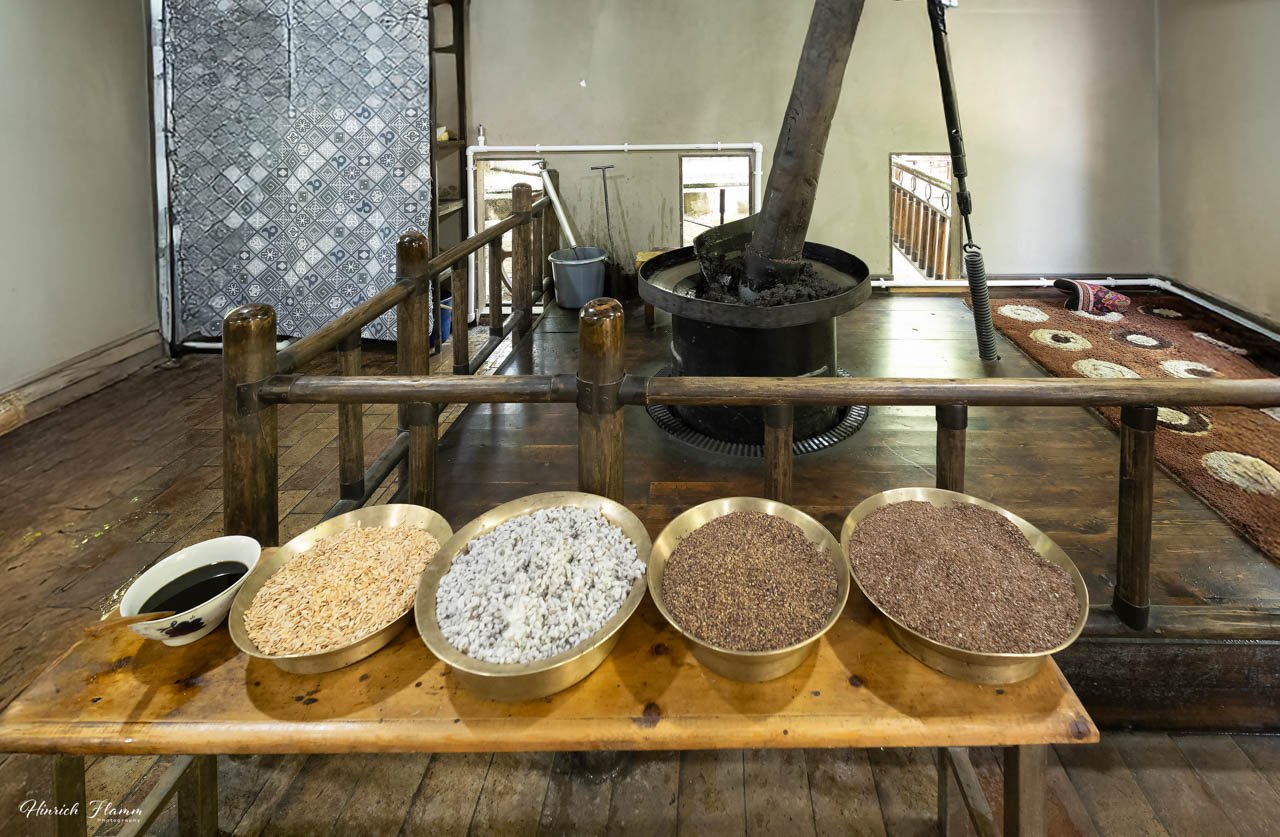Uzbekistan
is a landlocked country in Central Asia with a population of some 36 million bordered by Kazakhstan, Kyrgyzstan, Tajikistan, Afghanistan, and Turkmenistan. Toshkent is the capital city. It is independent from the Soviet Union since September 1, 1991, and was a major center of the Silk Road, the ancient trade route connecting China to Europe. Cities like Samarkand, Bukhara, and Xiva were cultural and intellectual hubs. We drove some 3000 km through the desert, the steppe, the mountain ranges in the southeast and the fertile Fergana Valley. During that time, we had the opportunity to taste plov (rice dish), shashlik (grilled meat), and samsa (savory pastries), local specialties. We experienced everywhere “The Uzbek People” as warm, hospital, welcoming, helpful, honest and respectful with a genuine, unforced kindness, which seem deeply woven into the culture.”
Samarkand
the “Pearl of the East” is one of the most legendary and historic cities in Uzbekistan and all Central Asia a major center on the Silk Road and a crossroads of world cultures for over 2,500 years conquered by Alexander the Great (4th century BCE) and later ruled by Persian, Arab, Mongol, and Turkic dynasties. It became the glorious capital of Tamerlane (Amir Timur) in the 14th century famous for being a hub of science, art, and Islamic architecture during the Timurid Empire. Staying at the center walking several hours a day we visited the mayor attractions and more:
· Registan Square – The heart of Samarkand, with three majestic madrasahs: Ulugh Beg, Sher-Dor, and Tilya-Kori.
· Gur-e-Amir Mausoleum – The burial place of Tamerlane, a masterpiece of Timurid architecture.
· Shah-i-Zinda – A stunning necropolis with a series of colorful mausoleums.
· Bibi-Khanym Mosque – Once one of the largest mosques in the Islamic world.
· Ulugh Beg Observatory – Founded by Timur’s grandson, it was one of the most advanced astronomical centers in the 15th century.











































